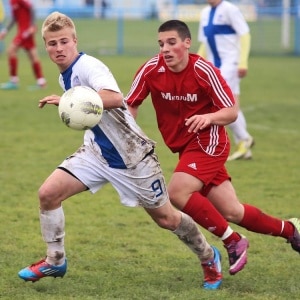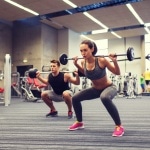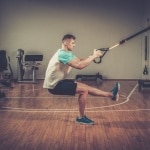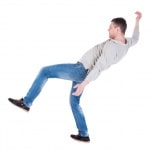Often times I find myself deflecting clients’ concerns about fatigue during an exercise session, or while they were involved in an activity outside the gym. Barring sleep-related matters that could impact how the body performs any particular activity session.
If sleep is not the issue, then, then what is?
The way I explain it is that there are 3 types of fatigue pertaining to muscular activity: central/cardiorespiratory, peripheral/muscular, and neurological/neural. The circumstances differ for each one though the effect on performance can appear, but not feel, similar. Read here, here and here for more of my thoughts and the research on this issue.
Central fatigue pertains to the decrease in the heart’s ability to move enough oxygen to the required muscles, or brain, that will ultimately limit their ability to recover sufficiently to perform their desired tasks. True aerobic exercise like a long, slow jog or bike ride, will task the metabolic systems available to the heart. If prolonged enough, will wear out the metabolic systems within the muscle to where it will be unable to continue or resume contractions.
In either case, as the heart loses its power to send fresh O2 to the musIcles, the muscles will slow down or stop as lactic acid builds up in an effort to supply the muscles a substrate for fuel.
Peripheral or muscular fatigue is what happens when a muscle contracts with great frequency or force to the point it runs out of energy substrate or ATP. This can happen even if the cardiovascular system is still running well, such as during low-intensity resistance training. Imagine doing a max set of a submax or near-max load curls. Eventually the muscle gets tired though your breathing hasn’t changed all that much. In this case, the biceps muscles have fatigued but you could move onto another exercise with equanimity.
Neurological, or neural, fatigue is what you would experience if you were attempting to stand on one leg for a long period of time. The nervous system sends signals to all the muscles of the foot, ankle, lower and upper legs, and the hips/core. At some point, while most of the muscles are not yet exhausted, you start to wobble. Then collapse. In this case, the nervous system got tired to coordinating the large number of muscles involved in such a simple task. Give it a moment, and you could probably resume.
Now it is possible that central fatigue leads to muscular fatigue and that the nervous system gives out trying to maintain the offending movements. We can see this happening at the end of race, especially a non-aerobic one like the 100 m or 800 m track event, where the legs collapse due to the cardiorespiratory system having reached its max.
It’s also possible that the muscles fatigue as the central fatigue can’t keep up with the demands on it. We might see this when doing a large muscle-group exercise such as squats or, especially, clean and jerks. In these kinds of exercises, so many muscles are working anaerobically that you start breathing hard during but especially after the set. The anaerobic system is taxed because the muscular system is overwhelmed.
Finally, it’s possible for the lack of heart-supplied energy/O2 to put the muscles in a state whereby they are unable to perform a movement and the nervous system gets wiped out trying to keep the muscles firing. Too, extreme muscle actions, be they high rep or high load, can challenge the nervous system to the point of fatigue. Think one-leg squats, where the exercise load is more demanding both for the vertical load itself and the need to maintain balance.
Thus, we could imagine a pathway of fatigue that looks like this:
Central causes muscular causes neurological fatigue.
But we would be hard pressed to imagine one that goes the other way around:
Neurological causes muscular causes central fatigue.
In this case, taking our example above, balancing on one leg – not with a squatting movement – causes the nervous system to get tired while the muscles clearly have enough strength remaining to hold you up; and you’re hardly breathing hard.
Now how does this relate to exercise fatigue, the kind my clients might complain of? For one thing, any particular exercise may induce fatigue but I try to reassure them that it’s not necessarily the kind of fatigue that’s related to age or overall conditioning. Granted, being younger and fitter might confer greater resistance to either of the fatigues, but some exercises are by nature fatiguing more than they may appear. How so? Because most folks view fatigue from a central standpoint, maybe a muscular one.
Too, you can be older and less fit but still have great endurance in muscular or neurological challenges assuming your activities or training have prepared you for them. Consider the balance challenge to standing in tandem stance, arms across the chest, eyes closed. A superb test of one’s balance, some who train for this purpose may not be able to hold a squat on a wall for long periods of time (muscular fatigue) or walk great distances (central fatigue). But they have developed neurological endurance, so to speak, whereby they are capable to maintaining better balance in real-life activity even without having stronger muscles.
The point is, we as trainers, and you as active participants, need to acknowledge and accept that there are differences in how we get tired. Some activities require developing cardio endurance, some require muscle endurance and some require nervous system endurance.
It is our job as trainers to focus accordingly, both to what the movement demands and what the client needs.
For now, my fingers and back are tired from typing, but I think I’ll go out on the gym floor and do some push ups…just to get the heart pumping.
















